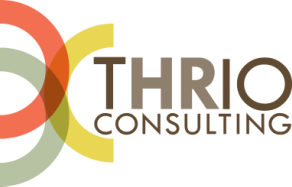|
Play along with me here — imagine a senior executive informing one of his departmental leaders that he’s been identified to participate in an assessment process. Tiny beads of sweat start to form as the leader realizes that his professional reputation will be cast open to judgment, possibly subjecting him to a walk of atonement once his assessment results are put on display. With little understanding of what lies ahead, the leader is already dreading the assessment process. The question that lingered in the mind of the leader is one that is commonly asked by anyone involved in the employee assessment process. For example, I recently participated in a leadership assessment certification process with a small group of talent management professionals. On the second day of the certification program, the group wanted to grapple with the question before we could continue moving forward: “Who owns the feedback from the assessment?” Not in terms of who covers the costs for the instrument; but rather, who has visibility to the feedback and what actions can (and shouldn’t) be driven from its results? Whose Data is it? Whenever assessments are administered in the workplace, whether formally directed or simply made available to employees, the question of “who owns the data” is always on the table. Always. More specifically, participants, including those being assessed along with anyone invited to contribute feedback, want absolute clarity on who will have visibility to the results, and for good reasons:
Different Needs, Different Approaches With multiple stakeholders to satisfy and a copious array of assessments from which to choose, the path to selecting the right tool for the job isn’t always clear. Self-assessments feed your responses into complex algorithms, providing results that allow you to see yourself in a new way. Whether the tool is measuring your strengths, personality, attributes or advantages, I find it interesting when people say, “Wow! That’s really me!” after seeing their results. Of course it is — you home baked the product. There are plenty of research-based, validated self-assessments available, along with loads of online “me-surveys” that are just plain fun (what Game of Thrones character do you most resemble on Facebook?). Whenever we gaze into the self-assessment feedback mirror, we see ourselves through a unique lens that can help us to improve how we engage our thoughts and our actions. Multi-rater and 360-degree assessments are powerful development tools intended to provide balanced feedback and allow us to play up our strengths and pay attention to our overused or misused behaviors. Most everyone on the receiving end of a multi-rater assessment will swim through an ocean of emotions once presented with their feedback results — emotions ranging from pure joy (like Sally Fields' Oscar moment), to the achy realization that you just may be the Toby Flenderson of your office. Ouch. Through an online search of employee assessment tools, there are hundreds (thousands, maybe) of assessments available to suit your situation. There are equally as many expert resources available to help you get started by matching your unique business needs to the right assessment instrument. Here are three scenarios, each utilizing a different type of assessment tool, along with examples of data ownership and visibility: Scenario 1: Employees from a large, cross-functional team were invited to participate in a self-assessment tool to help them identify and further develop their natural strengths. The groups’ “top strengths” were then plotted on a comparative report, which generated great discussion among the team. Individuals could choose to share more about their results, but were not required to do so. There was constructive dialogue among the group that led to an increased understanding of the teams’ strengths, while personal boundaries were respected. Scenario 2: A senior leader was looking for greater insight to help him assess and improve his leadership effectiveness with his team, his manager, and his colleagues. A 360-degree assessment tool was selected, the leader and his boss identified and agreed upon those who would provide feedback, and the instrument was launched with clear participant instructions for completion. Early on, it was made clear to everyone involved that the feedback would remain private to the leader only. What participants were provided was the leader’s resulting action plan detailing his developmental goals based on the feedback he’d received. Scenario 3: Several individuals, both internal employees and external candidates, were vying for a plum executive level leadership role in the organization. As part of the selection process, final candidates were asked to complete an assessment of leadership potential, the results of which would be shared among the selection team as one aspect of the candidates’ professional profile. The scored results and comments were not shared with the candidates or feedback participants; rather, customized development guides were provided to each candidate based on their collective feedback.
Clarity is the Key Regardless of the type of assessment or delivery mechanism, the most successful employee assessment processes are introduced to employees with clarity and transparent communication to address the issue of ownership and visibility before any tools are launched. Without clear guidance and direction setting up front, employees may come to view assessments as a stealth mission intended to underscore or document performance improvement needs, disciplinary actions or stack ranking for workforce reductions. No one likes surprises, and misguided or misinterpreted outcomes will only leave people feeling dissatisfied with the process and cynical of assessment opportunities in the future. Lack of transparency hinders the organization’s ability to create a feedback-rich culture. No one wants that, especially organizations banking on growth through talent development investments.
0 Comments
Leave a Reply. |
FOLLOW USHR musings, talent management, business accelleration, family, fun - I'll cover them all. Check back often, and share your comments. Archives
December 2017
Categories |
|
THRIO Consulting, Inc.
401 1st Street South Suite 1411 Minneapolis, MN 55401 612.868.8090 [email protected] Copyright© 2024 THRIO Consulting. All Rights Reserved. |
READY TO LEARN HOW THRIO CAN HELP
TRANSFORM YOUR BUSINESS? Call for a FREE 30-Minute Consultation
612-868-8090 |





 RSS Feed
RSS Feed